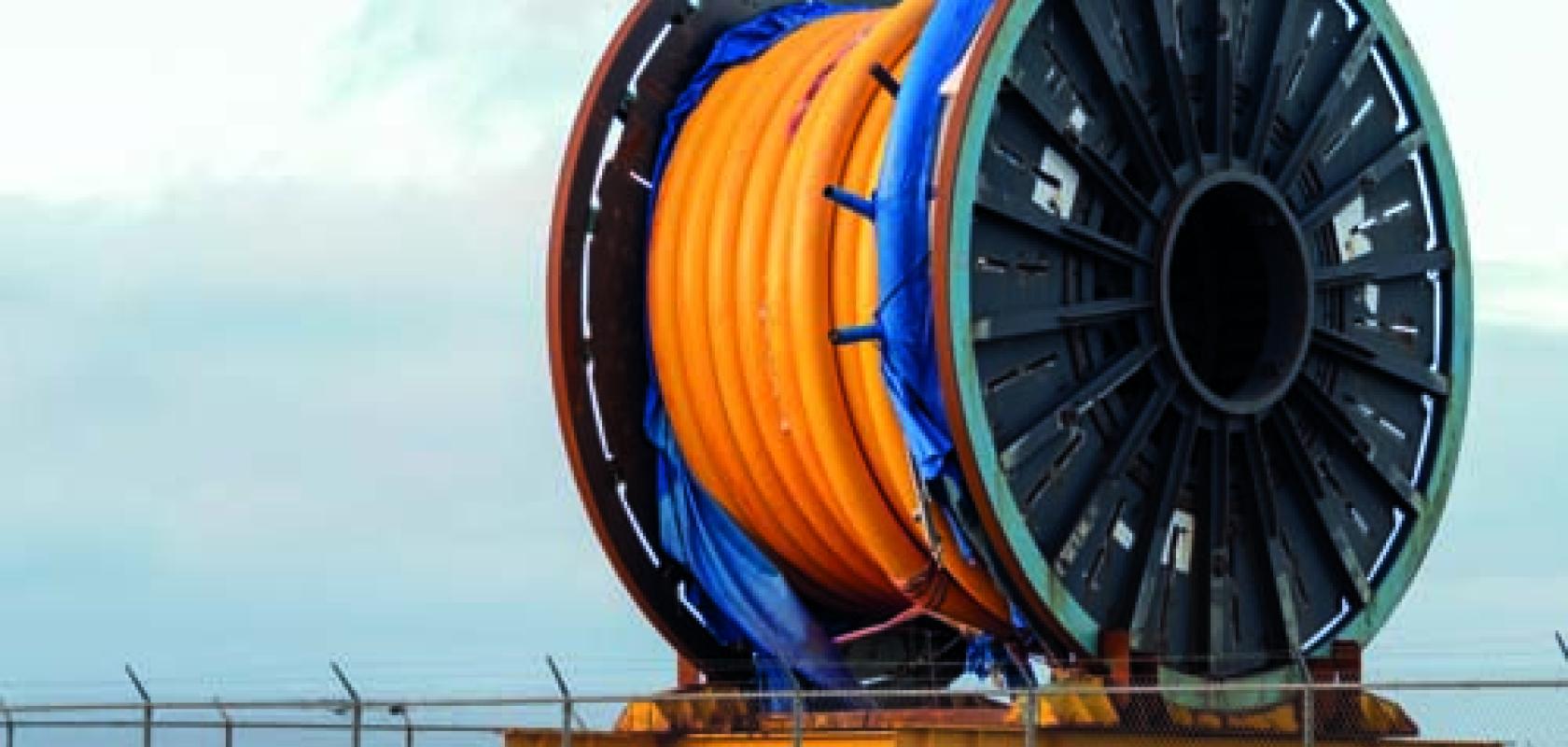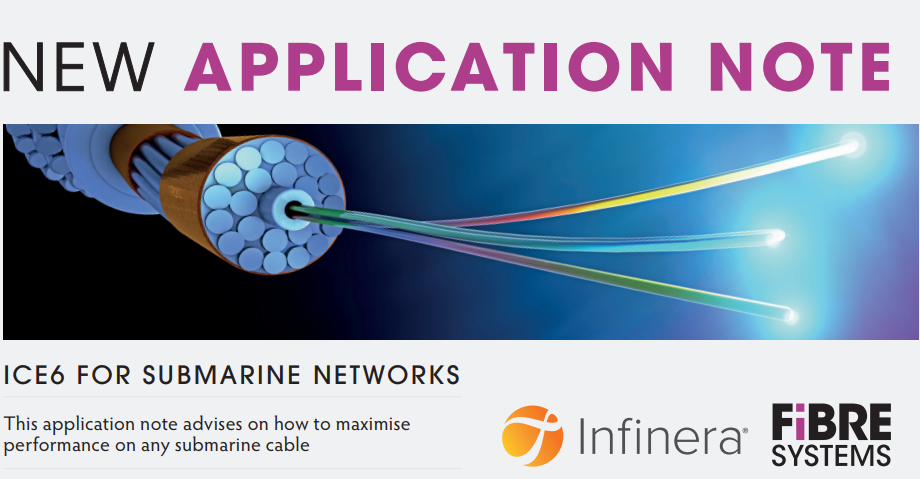Keely Portway looks at some of the challenges faced by submarine network operators in today’s bandwidth-hungry era, and finds out how performance could be maximised, whatever the cable system
The first submarine communications cables were laid in the early 1850s to carry telegraphy traffic between continents, with the first transatlantic telegraph cable going into operation in August 1858.
Almost two centuries (and pandemics) later, the need for reliable global communication has, arguably, never been more pronounced. So, it’s perhaps of little surprise that so many submarine networks are currently in some stage of planning, build or operation.
Those fibre optic cables that lay along the seabed to carry communications signals between landing stations are responsible for more than 95 per cent of international traffic, and the market is growing.
According to the latest report from ResearchAndMarkets.com, the global market for submarine cables is predicted to reach $44.33bn by 2030, up from $25.50bn in 2021, registering a compound annual growth rate of 6.1 per cent. It’s widely recognised that a huge driver is the increased investment by hyperscalers such as Facebook, Google, Microsoft and Amazon, who own, manage and fund their submarine cable infrastructure.
The report also cites Asia-Pacific, South America, and the Middle East and Africa regions as additional growth drivers, thanks to rising internet use and data traffic during the forecast period. The increasing demand and penetration of the internet, collaboration with tier-1 vendors and the ever-increasing demand for bandwidth thanks to 5G roll-out, amongst other factors, have also propelled demand.
This appetite for more and more bandwidth is having a direct impact on submarine cable operators. Another recent report, this time by Telegeography, states that between 2019 and 2021 alone, international bandwidth used by global networks doubled, to reach nearly 2,900Tb/s. Of this, those aforementioned hyperscalers were cited as the dominant users of international bandwidth, accounting for 69 per cent of all used international capacity last year.
Up to the challenge
This presents a specific challenge for operators. In particular, those who own a fibre or some spectrum, or even the whole cable, who are responsible for the submarine line terminal equipment, to try and maximise the capacity. They must ensure the performance of their submarine cable network is optimised, regardless of whether the cable is dispersion managed, uncompensated, space-division multiplexing (SDM), or unrepeatered.
This is a key point. A lot of people think of submarine cables all as the same. But the market actually breaks out into different systems, largely based on when the cable system was deployed, because different technologies were deployed at different times. The first generation of dispersion managed cables, for example, was deployed between approximately 2000 and 2010, with a second generation coming later. The main thing about dispersion managed cables, says Paul Momtahan, director of solutions marketing at Infinera, is they have very low chromatic dispersion.
He explains: ‘That’s a bad thing for coherent transport because it means there is a higher chance of the symbols, as it were, lining up in the fibre and all changing its refractive index at the same time. The difference between the first and second generation dispersion managed cables is that, in the first generation there were a lot of variation in the chromatic dispersion across the C-band, and operators tended to get very close to zero chromatic dispersion at the centre, but then, at ends of the C-band, it either went very high or very low. In the second generation, you basically have the same chromatic dispersion for each wavelength, regardless of where you are in the C-band. The challenge for the dispersion managed is how you deal with lack of chromatic dispersion and the nonlinearities that result from that. A secondary challenge with the first generation is you may get very good performance on one wavelength, but really bad on another.’
An example of such a system is Telstra’s dispersion-managed subsea cable between Hong Kong and Singapore, a segment that spans 2,940 km. The company deployed Infinera’s ICE6 800G solution, with its highly granular baud rate configuration, specialised subsea modulations and Nyquist subcarriers, resulting in a 45 per cent increase in capacity over previous-generation technology and 20 times the original design capacity of the cable.
Uncompensated cables provide their own challenges, continues Momtahan: ‘Next came uncompensated, with which operators realised that chromatic dispersion was a good thing and put lots of chromatic dispersion into the fibre. They also increased the effective area, or size of the core on the fibre to enable higher power for relatively lower nonlinearities. This was from around 2015. The challenge with this fibre is it tends to run a very high power for each wavelength. And even though the chromatic dispersion and large effective area offset the penalties of high power to an extent, it still means nonlinearities are a big challenge, but for a different reason than the dispersion managed cables.’
To offer an example of an uncompensated system, the Asia-Africa-Europe-1 consortium’s (AAE-1) cable system spans 25,000 km of submarine and terrestrial networks, connecting 19 countries led by a consortium of 19 leading operators. It was set up to provide connectivity across European, Asian, African and Middle Eastern markets, more than doubling the capacity to provide in excess of 100Tb/s. The consortium selected Infinera’s ICE6 coherent 800G solution to maximise its submarine network capacity. AAE-1 terminates at two points-of-presence in Singapore for enhanced route diversity and extends farther into Asia via diverse terrestrial routes across Thailand to provide connectivity to Vietnam, Cambodia and Hong Kong.
By upgrading with Infinera’s fifth-generation ICE6 technology on the GX Series Compact Modular Platform, the consortium was able to leverage long codeword probabilistic constellation shaping (LC-PCS) and Nyquist subcarriers to maximise spectral efficiency. ICE6 technology will also enable AAE-1 to increase the spectrum on some of its terrestrial network segments, by using the L-band, in additional to the C-band.
Journey into space
A more recent cable system type to emerge is SDM. ‘The idea is,’ says Momtahan, ‘rather than having maybe eight fibres in a cable, it increases to between 12 and 24. The issue is the operator is constrained in terms of how much power they can have to each repeater – how much electrical power is on the cable system. So now there are more fibres, that means there are more repeaters. But each repeater has to run with lower power. So each wavelength is running at a lower power. That creates its own challenge in that when you get to the receiver, you’ve now got a very low signal-to-noise ratio.’
The other type of system is unrepeated/festoon, where there are no repeaters in the sea, rather just a very long fibre. The challenge here for operators, says Momtahan, is they have to have a lot of amplification. ‘This is because they have this very long span that makes the noise from the amplifier a challenge. They may also have to run it at a very high transmit wavelength power as another way of coping with this, which can also give you nonlinearities.’
Regardless of what type of system it is, what they all have in common is the investment behind them is always significant. Not just financially, but also in terms of time to plan, build and deploy. It is important, therefore, that submarine network operators look to extend their lives and maximise their capacities, regardless of the specific challenge. To help, Infinera has produced an application note, with advice for operators, to be used alongside its toolkit , from which operators can pick and mix to maximise performance on any submarine cable type.
References
Submarine Cable Market Size, Share & Trends Analysis Report by Application, by Voltage, by End User, by Offerings, by Component, and Regional Forecasts, 2022-2030
Find out more about how any submarine cable's performance can be miximised using the latest developments in technology by downloading the latest application note from Infinera.


